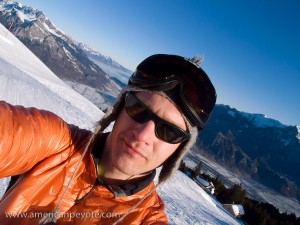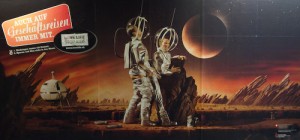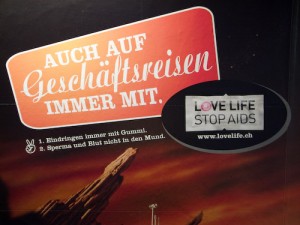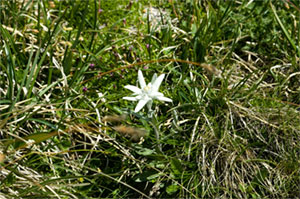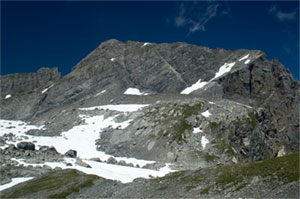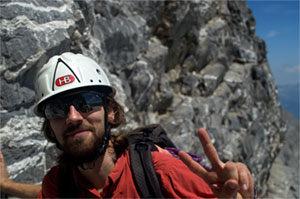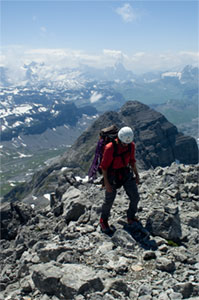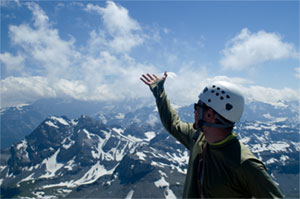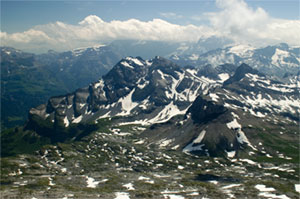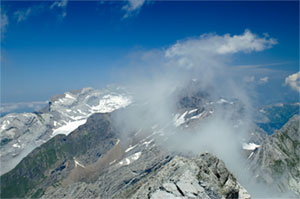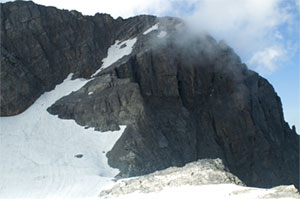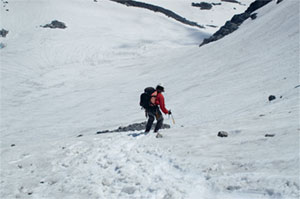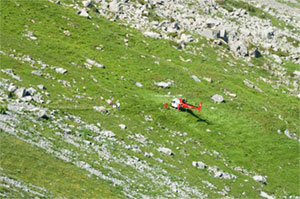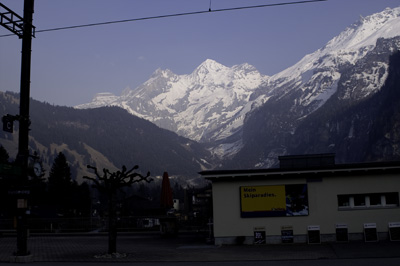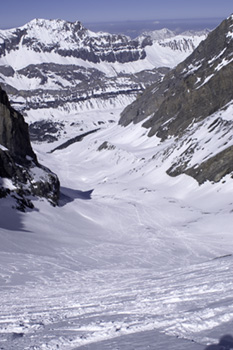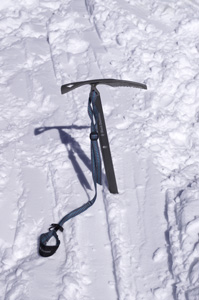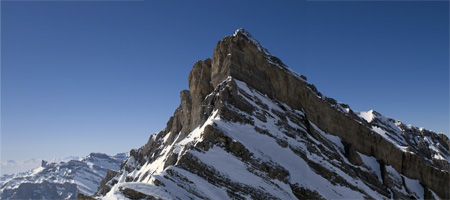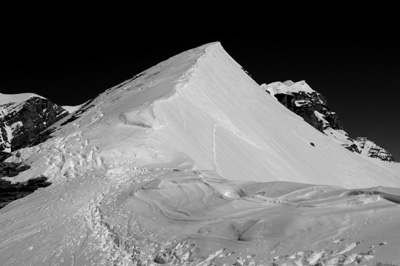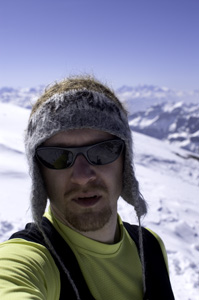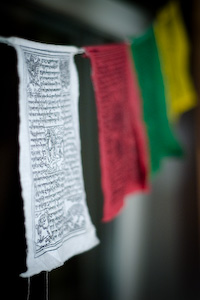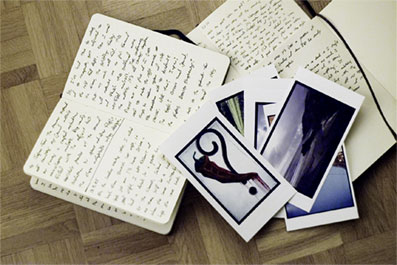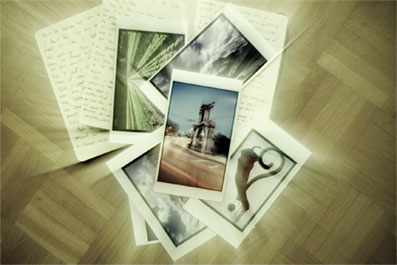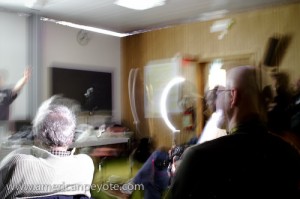 Over the weekend I headed down to CERN in Geneva to check out the Strobist seminar on February 21st, 2009. I went down on Friday to shoot Geneva graffiti and ended up doing coverage of a Tamil Tiger demonstration at the United Nations, but those stories wait for another day. I’m the sort of person who doesn’t like spending money on photography education, mainly because there’s nothing really complex or technical about taking pictures which seems to justify the cost of advertised offerings like the Luminous Landscape workshops. A camera is a lightbox, you add light with flashes or manipulate natural lighting, what’s there to learn? You take the vision in your head and make it a reality. But I do occasionally drop money here and there, a Joey L Photoshop DVD, a book on Skin, a book by Michael Grecco, and I figured it was time to join a lighting workshop.
Over the weekend I headed down to CERN in Geneva to check out the Strobist seminar on February 21st, 2009. I went down on Friday to shoot Geneva graffiti and ended up doing coverage of a Tamil Tiger demonstration at the United Nations, but those stories wait for another day. I’m the sort of person who doesn’t like spending money on photography education, mainly because there’s nothing really complex or technical about taking pictures which seems to justify the cost of advertised offerings like the Luminous Landscape workshops. A camera is a lightbox, you add light with flashes or manipulate natural lighting, what’s there to learn? You take the vision in your head and make it a reality. But I do occasionally drop money here and there, a Joey L Photoshop DVD, a book on Skin, a book by Michael Grecco, and I figured it was time to join a lighting workshop.
The Strobist workshop was all day on Saturday. We started around 9am, and finished at 5pm with a few breaks in between. In the morning we listened to David explain lighting design and methodology, and in the afternoon we watched David setup and execute four different lighting setups.
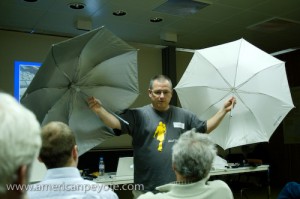 The morning focused on lighting basics, the thought process for designing lighting in different environments. Lighting concept takes a few minutes to describe in every possible detail, but the morning was filled up on designing lighting for different environments, shooting outside in the shade, lighting an interior room by starting with the ambient light and then adding flash where needed. By the end of the morning I had a good handle on the method, which I hadn’t really used before. I finished the morning with one key process in my head:
The morning focused on lighting basics, the thought process for designing lighting in different environments. Lighting concept takes a few minutes to describe in every possible detail, but the morning was filled up on designing lighting for different environments, shooting outside in the shade, lighting an interior room by starting with the ambient light and then adding flash where needed. By the end of the morning I had a good handle on the method, which I hadn’t really used before. I finished the morning with one key process in my head:
When shooting a portrait outdoors, find a shaded location, under expose the ambient environment light, add light to paint the final picture using the strobes. Use the same basics for interior portraits.
That’s it, like I said, photography isn’t exactly complex, so there’s no reason to take away confusing tidbits on lighting ratios. If you write up a business plan and ask for $500,000 from an Investment Angel for your startup, they will want to hear your idea described in 2-3 sentences (Swiss StartUp Camp 2009). That’s it, keep it simple. I see no reason why lighting design should be any different.
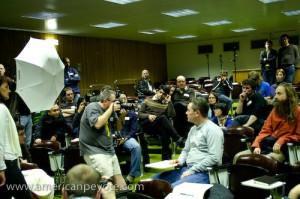 Aside from having the basic process of lighting design, the afternoon exposed us to how to “execute.” Using the seminar room, we talked about four different locations to use for portraits. Then David set about the room with umbrellas and his Orbis ringflash, photographing participants. From a certain perspective, David Hobby is like the kid who got all the toys he wanted for Christmas, and spends every day rediscovering their amazingness. This was the impression I had watching him setup the different portraits. It seemed like each light setup was like finding a rocket in the backyard and getting to set it off. This is the corner stone, getting a sense for the energy and problem solving method of the man at work – the message which I took away from the afternoon. This aspect which is more difficult to communicate on a website like Strobist, and a good reason to attend a workshop. The technical aspects are of course – trivial. Flashes are not complex, neither is lighting design, it’s how one executes the shoot which matters.
Aside from having the basic process of lighting design, the afternoon exposed us to how to “execute.” Using the seminar room, we talked about four different locations to use for portraits. Then David set about the room with umbrellas and his Orbis ringflash, photographing participants. From a certain perspective, David Hobby is like the kid who got all the toys he wanted for Christmas, and spends every day rediscovering their amazingness. This was the impression I had watching him setup the different portraits. It seemed like each light setup was like finding a rocket in the backyard and getting to set it off. This is the corner stone, getting a sense for the energy and problem solving method of the man at work – the message which I took away from the afternoon. This aspect which is more difficult to communicate on a website like Strobist, and a good reason to attend a workshop. The technical aspects are of course – trivial. Flashes are not complex, neither is lighting design, it’s how one executes the shoot which matters.
When photographing, be a kid at play and you’ll have fun and take away cool photos. That’s it, nothing too complex.
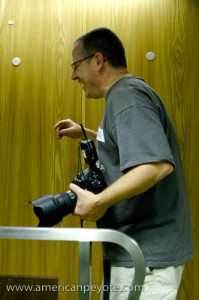 Yeahhhh, Baby. That’s what we heard every five minutes, David’s way of pulling an emotional response from his subjects. It made me think of Platon asking Bill Clinton to “Show me the Love.” By channeling Austin Powers, David pulled a smile from everyone in the room, every time he said the same line again, and again and again, it got a positive reaction. Apparently he has other lines, but since “Yeahhhhh Baby” worked every time, there wasn’t any need to bring out the reserves.
Yeahhhh, Baby. That’s what we heard every five minutes, David’s way of pulling an emotional response from his subjects. It made me think of Platon asking Bill Clinton to “Show me the Love.” By channeling Austin Powers, David pulled a smile from everyone in the room, every time he said the same line again, and again and again, it got a positive reaction. Apparently he has other lines, but since “Yeahhhhh Baby” worked every time, there wasn’t any need to bring out the reserves.
Basically much of the technical information I took away from the Strobist seminar is covered on Lighting 101 and 102 on the Strobist website. Of course, pretty much all knowledge is available on the internet, you can teach yourself JAVA programming, electrical engineering, and quantum physics if you’re disciplined. The question I always ask in my head, “was this really worth it?” Yes, in the end I left CERN happy that I’d dropped 150 CHF on a Strobist lighting seminar, plus travel between Zurich and Geneva and a sound-proof hotel room on Friday night, just as I’m still happy I dropped some 200 odd dollars on the Joey L Photoshop DVD.
And that’s the key to having a successful StartUp, give people something which they feel they need, and which they find value in, and you’ll be successful.
If you’re in Switzerland an interested in Strobist stuff, check out Swiss-Strobist. There’s a post about the CERN workshop and info on the 1st Swiss-Strobist meetup for 2009.
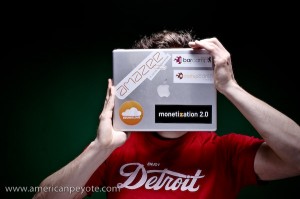 Organized on
Organized on 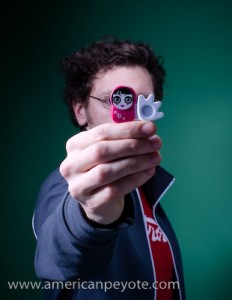 One of the many cool sponsors of the camp was Poken, a cool little device thats helps to aggregate all your social networks into one place. At first glance it reminded me of a Tamaguchi and the phrase “impending lawsuit by the makers of Pokemon?” was the first thing that popped into my mind when I saw the little device. Basically the Poken is used to exchange “Pokes” with people in real life, then you plug the device into a USB slot and head to the website, all the social network stuff is then right there for everyone you exchanges Pokes with. Pretty cool, fairly neat.
One of the many cool sponsors of the camp was Poken, a cool little device thats helps to aggregate all your social networks into one place. At first glance it reminded me of a Tamaguchi and the phrase “impending lawsuit by the makers of Pokemon?” was the first thing that popped into my mind when I saw the little device. Basically the Poken is used to exchange “Pokes” with people in real life, then you plug the device into a USB slot and head to the website, all the social network stuff is then right there for everyone you exchanges Pokes with. Pretty cool, fairly neat.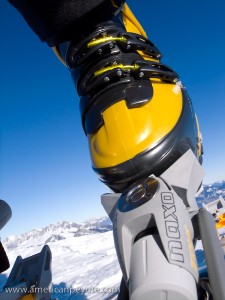 Some time in 2005 I walked into the Oerlikon outlet store of Baechli Bergsport and picked up a pair a yellow and grey Lowa Evo ski touring boots. They were on sale and I thought, “ski touring, always wanted to do that.” In the winter of 2008 I bought a pair of NAXO N02 touring bindings, a pair of Atomic skis, Black Diamond skins, a BCA avalanche beacon, Black Diamond probe…ready to realize my ski touring dream.
Some time in 2005 I walked into the Oerlikon outlet store of Baechli Bergsport and picked up a pair a yellow and grey Lowa Evo ski touring boots. They were on sale and I thought, “ski touring, always wanted to do that.” In the winter of 2008 I bought a pair of NAXO N02 touring bindings, a pair of Atomic skis, Black Diamond skins, a BCA avalanche beacon, Black Diamond probe…ready to realize my ski touring dream.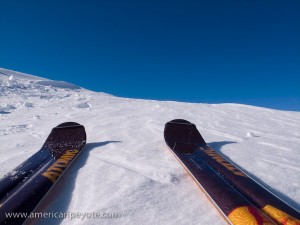 At Pizol you have the option of heading on from the resort for another 600 vertical meters to the Pizol summit, but as I was alone, I decided to stay out of the backcountry. Avalanches sound like trains, and it’s ill-advised to stand in front of either one. I’ve had the pleasure of having an avalanche come down on me in Colorado, a pleasure as I ‘m still here to talk about it. It’s good to experience some things ONCE, and that once was once enough. At Pizol the weather was fantastic above 1500 meters. Down below in the valley was Das Nebelmeer, German for sea of clouds, that beautiful event where the clouds are pushed below the mountain peaks, and you look out from the sunshine. The light was perfect, beyond perfect, which is impossible, but it was.
At Pizol you have the option of heading on from the resort for another 600 vertical meters to the Pizol summit, but as I was alone, I decided to stay out of the backcountry. Avalanches sound like trains, and it’s ill-advised to stand in front of either one. I’ve had the pleasure of having an avalanche come down on me in Colorado, a pleasure as I ‘m still here to talk about it. It’s good to experience some things ONCE, and that once was once enough. At Pizol the weather was fantastic above 1500 meters. Down below in the valley was Das Nebelmeer, German for sea of clouds, that beautiful event where the clouds are pushed below the mountain peaks, and you look out from the sunshine. The light was perfect, beyond perfect, which is impossible, but it was.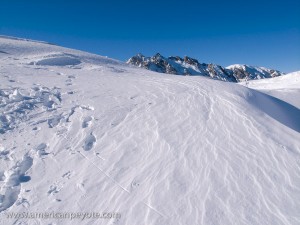 Ski touring looks fly, but it’s surprising exhausting. I was vacationing in Detroit for Christmas and my Swiss mountain legs hadn’t been exercised in months. So when I skied down the slopes and tried to turn my legs revolted with deep screams of muscle fatigue. I’m a weak, flabby man, a poor example of a mountaineer, but there’s always next weekend. I made it back to the gondola without crashing and decided to head back for a relaxing Sunday night in Winterthur. “Why push it?” The best ski season in February and the best touring in March (so I hear) and I just want to be in touring shape for the days to come.? That’s the point of Lazy Swiss Sundays, to not kill yourself, but to enjoy life. Their are many firsts in this life. Many things to be remembered, and many things to look forward to. A lazy tour in a resort area doesn’t sound exciting when written down, but it was a start, a flickr of adventure for the soul. It was the start of the beginning.
Ski touring looks fly, but it’s surprising exhausting. I was vacationing in Detroit for Christmas and my Swiss mountain legs hadn’t been exercised in months. So when I skied down the slopes and tried to turn my legs revolted with deep screams of muscle fatigue. I’m a weak, flabby man, a poor example of a mountaineer, but there’s always next weekend. I made it back to the gondola without crashing and decided to head back for a relaxing Sunday night in Winterthur. “Why push it?” The best ski season in February and the best touring in March (so I hear) and I just want to be in touring shape for the days to come.? That’s the point of Lazy Swiss Sundays, to not kill yourself, but to enjoy life. Their are many firsts in this life. Many things to be remembered, and many things to look forward to. A lazy tour in a resort area doesn’t sound exciting when written down, but it was a start, a flickr of adventure for the soul. It was the start of the beginning.